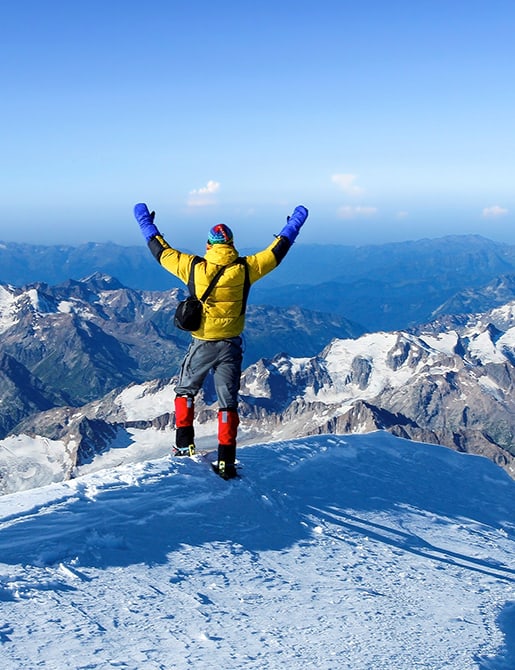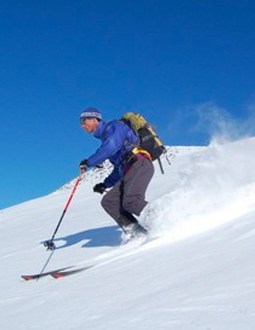
Learn essential skills in this 3-day mountaineering course, including glacier travel, crevasse rescue and ice climbing on many glaciers of Mt. Baker. Mt. Baker is arguably the best location to gain intensive glacier travel skills in the lower 48, and we have been guiding there for over a decade.
2026 Course Dates

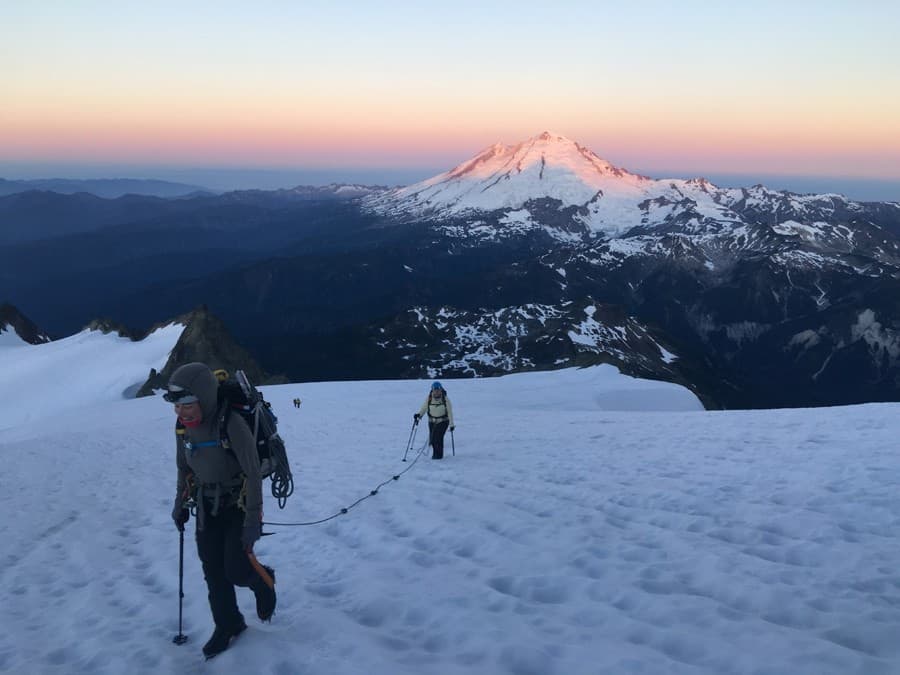

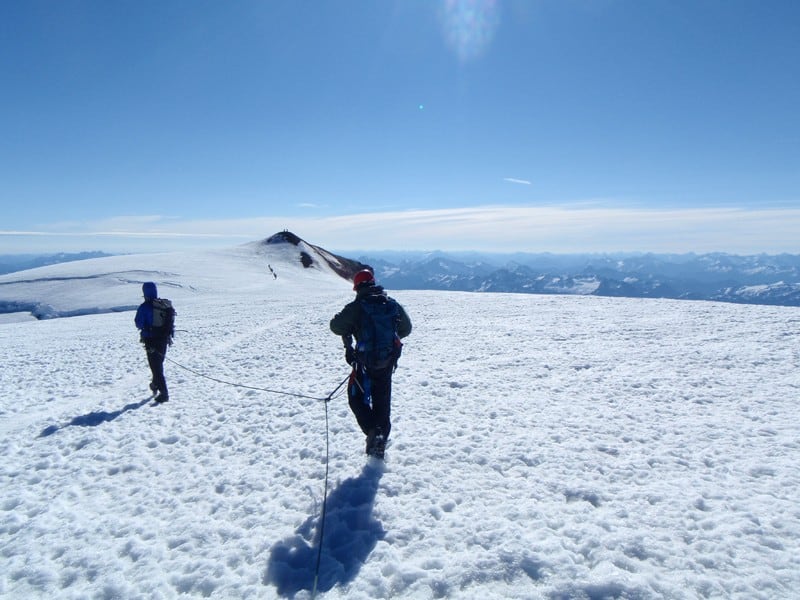
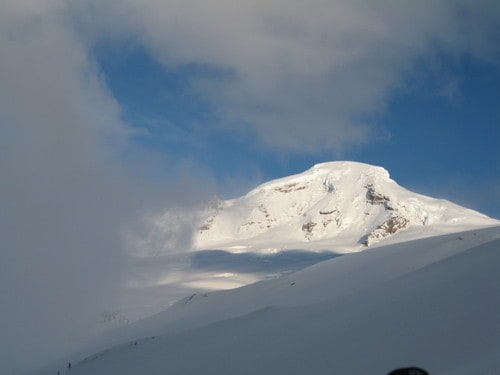
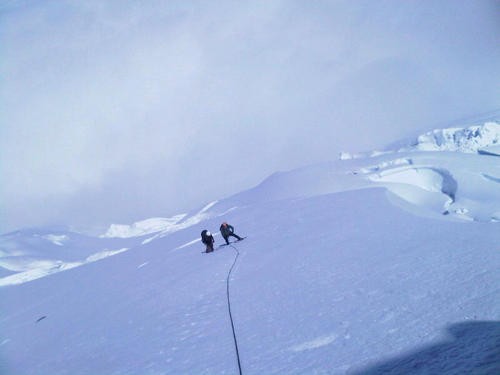
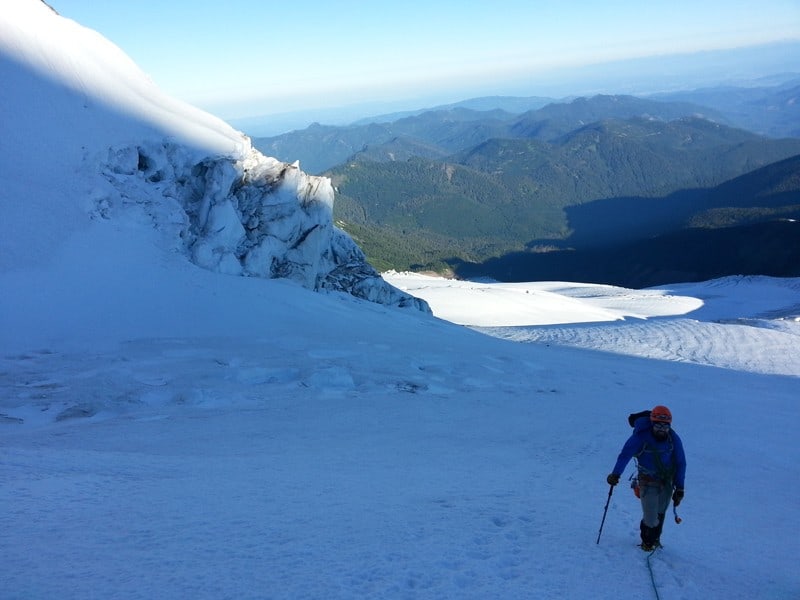
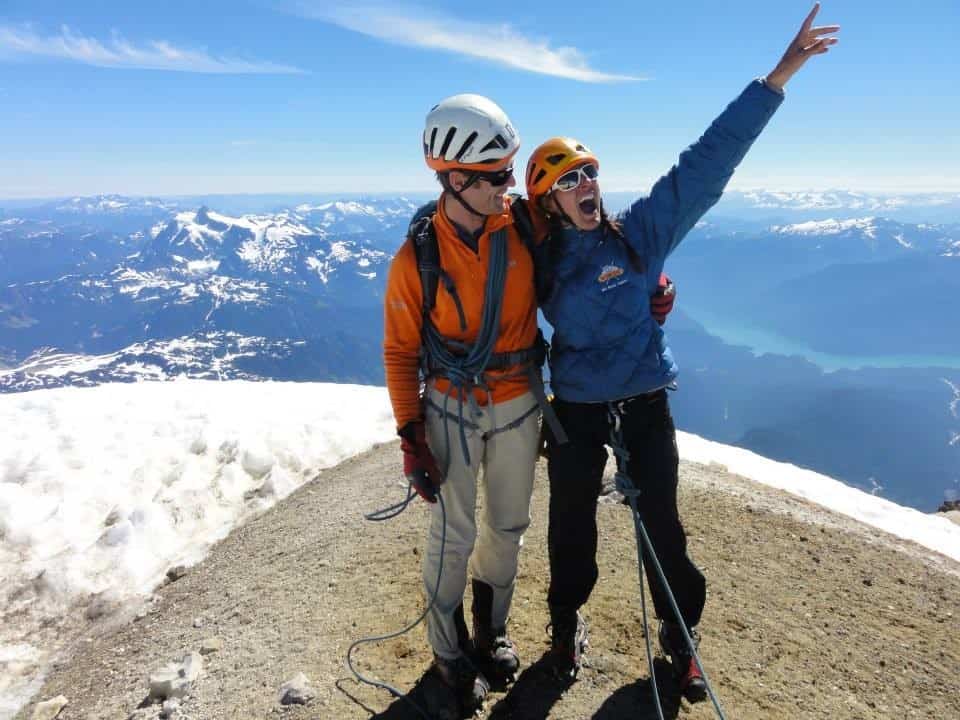




Why Pro Guiding Service?
We have been a concessionaire on Mount Baker for a decade now with a perfect safety record. We offer an optimal participant to instructor ratio at 4:1 and 8:2 max. This is a very important factor in being able to tailor the program to the participants' needs. We also pride ourselves in creating relevant and movement based lesson plans. This means that you will not see us standing around in camp talking about crevasse rescue. The glaciers of Mount Baker and Colfax Peak are an amazing classroom and we take full advantage. The curriculum for this course was designed by Martin Volken, a longtime AMGA instructor/examiner, so you can be assured that you will be taught a modern curriculum. Pro Guiding Service's guides are professional mountain guides, meaning they are either certified guides or are actively pursuing a path of professional mountain guiding education by the American Mountain Guides Association. Our 4-day course is designed to combine the excellent high alpine instructional environment of Mt. Baker with a quality summit climb. We have taught enough of these courses to make the curriculum very mature. The participant will be fully immersed in the elements of snow, glacier and ice and will be taught the necessary skills to roam safely in these environments. Please be aware the course curriculum may vary depending on weather and general conditions.
Why Mount Baker for classic glacier travel school?
Easy access: The access from the Seattle or Vancouver airports is very reasonable. This means that you can get to Glacier, WA from the Seattle area in a short 3 hour drive (1 to 2 hours from Vancouver), get to the trailhead, and actually do glacier work that same day on the Lower Coleman Glacier. Our first camp is the comfortable Merkwood Camp which is located about 10 minutes from our first ice climbing spot on the lower Coleman Glacier. So, in other words, the course is 4 days long and you will be immersed in the alpine environment of Mount Baker every day.
Big glaciers: Mount Baker is a very heavily glaciated volcano with ten glaciers flowing from its 10780 foot summit ice cap to well below tree line. So when we talk about glacier travel, we actually do it. The glaciation is big enough that whatever you learn will be relevant on just about any glacier anywhere.
Moderate summit elevation: Mount Baker is "only" 10780 feet high, but it has impressive vertical relief of just over 8000 feet. The moderate summit elevation makes a huge difference in how you feel. You do not need to worry about acclimatization, you can just concentrate on the technical aspects of the course curriculum, which is great. There is a lot to learn.
The Lower Coleman Glacier: It is rare to find such easy access to the so-called ablated zone (the snow free zone) of a glacier. The lower Coleman Glacier does not only offer this, but you can literally get there from the car in just over 2 hours. To make it even better our comfortable camp at "Merkwood" is located about ten minutes from the ice of the Lower Coleman Glacier. Why should you care? A big and very important component of learning how to move around competently on crampons are the so-called classic crampon techniques and those are clearly best learned on dry glacier ice, not on soft snow. We also ice climb on the lower Coleman Glacier and the safe Seracs of the Lower Coleman Glacier are nothing short of spectacular.
The upper camps: We have two choices there with the Hogsback Camp at 6000 feet or the Heliotrope Ridge Camp at 7200 feet. The lower camp offers dry and comfortable camping with running water and the upper camp offers views that seem to satisfy several Pacific Northwest clichés. You will look at the impressive Coleman Headwall of Mount Baker with the sprawling Coleman and Roosevelt Glaciers below it, then to the west are the endless sunsets over the San Juan Islands and to the North West you will see the city lights of Vancouver BC.
A rewarding summit: Climbing to the top of Mount Baker is essentially part of the course curriculum and the route via the Coleman-Deming Col is moderately strenuous, glaciated from camp to summit and very scenic. The Coleman-Deming Route is a great moderate glacier route in a big mountain environment.
Colfax Peak: Colfax Peak is a seldom visited satellite Peak of the Mount Baker uplift. Because of its lonely feel it is very rewarding.
Overall difficulty: Moderate (please refer to the “Mountaineering trips or courses” portion of the linked page above)
Experience Required: No prior mountaineering experience required
Fitness: Good physical fitness is required; you should be able to hike or climb for more than six hours with a pack varying from 20 to 40 pounds and ascend 3000 to 4000 feet of vertical gain per day for up to 3 days. It is important to note that the vertical gain from the lower Camp at the Hogsback is almost 5000 feet of vertical. This is actually more than the Mount Rainier summit day. Of course, Mount Baker is at a lower altitude, but the physical effort of climbing nearly 5000 feet should not be underestimated.
Day 1: From the ranger station we will commute together to the end of the road at 3600 feet. A two-hour hike will bring us to the spectacular camp on the moraine above the lower Coleman Glacier. We will establish camp and spend the afternoon and get an introduction to basic crampon and steep ice climbing technique. Specific topics covered on Day 1:
Day 2: We will move camp up to 7000 feet in the morning and spend the day covering glacier travel and crevasse rescue. The Coleman Glacier will provide an amazing backdrop. Specific topics covered on Day 2:
Day 3: It is time to apply the acquired skills on a summit climb! Most likely this will happen via the Coleman Deming route (unless the course takes place on the Easton Glacier side). Specific topics covered on Day 3:
Day 4: On our last day, we will get up early again and review our acquired skills. We have options: We can head back down to the Lower Coleman Glacier and keep working on our climbing skills or cover the very important topic of tour and route planning covering topics such as:
You can anticipate being back at the car at around 2:30 to 3pm. Please be aware that the course location may have to be changed to the Easton or Squak Glacier depending on mountain and or road access conditions.
We answer this question on the phone regularly, so let us try to answer it here: The basic topography of the two venues is quite different. The Mount Baker course venue happens on almost exclusively glaciated terrain on the north side of this 10780 foot volcano. The Coleman, the Deming, and potentially the Roosevelt Glaciers are our training ground and with that the focus is centered around all things snow and ice. Glacier travel, crampon work and crevasse rescue is a large topic on the Mount Baker Course. It certainly is an important topic in the North Cascades Course as well, but you will take a deeper dive into these topics on Mount Baker.
The North Cascades Mountaineering Course takes place in the Boston Basin in the shadow of the famous Forbidden Peak. The area essentially holds every element that you might encounter on a “classic mountaineering adventure”. The Boston Basin holds glaciers, steep couloirs, glacier polished slabs, narrow ridges, big faces and sharp peaks. Just like on Mount Baker, we teach very much what the terrain demands or rather we chose an extremely diverse zone of the North Cascades National Park to give the course participant a rounded introduction into world of mountaineering.
Both of the approaches into the camps are moderately strenuous, with the Boston Basin trail being a bit steeper. Both camps have running water and the views are stunning either way.
As soon as you leave camp, things start feeling a bit different. While you might have to commute for about 45 minutes up slabby rocks to reach the lower margins of the Quien Sabe Glacier and the amazing Sahale and Sharkfin summits beyond, you will find yourself wearing the crampons on the lower Coleman Glacier ice of Mount Baker almost immediately.
If you are looking for a great course to make you feel more comfortable on large glacier ascents (Rainier etc.), the Mount Baker Course is most likely for you, but if you are looking for an all-around introduction to the world of mountaineering and would like to summit classic peaks like Forbidden Peak, the Matterhorn, the venue we offer in the North Cascades is hard to beat.
In summary; if you want to truly learn the craft of mountaineering, you should take both courses. We are not saying this to sell more courses. Either one of these courses is a great start and there is some overlap, but together they build a fantastic mountaineering skill foundation.
No substantial prior mountaineering experience is required, but solid fitness will enhance the quality of your week substantially.
Yes, probably. The lower Coleman Glacier is probably one of the best spots for summer ice climbing in the lower 48 states and we will likely take advantage of it.
No, you are responsible for your own food. We are glad to help with food suggestions though.
Try to fit your gear into a 50 liter pack. If the week is conducted out of an established basecamp, you could consider a bigger pack along with a summit pack.
Although tipping is not a requirement, it is considered standard practice in the guiding industry and is appreciated by our guides. We generally recommend roughly 10%-15% of your course or trip cost or a flat amount that you are comfortable with.
